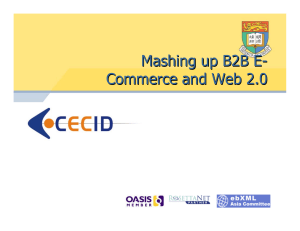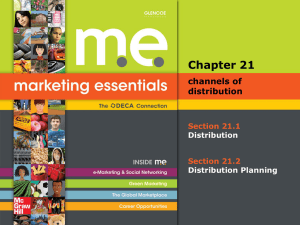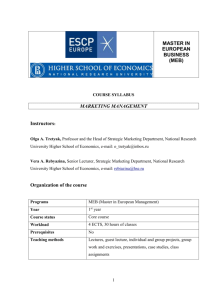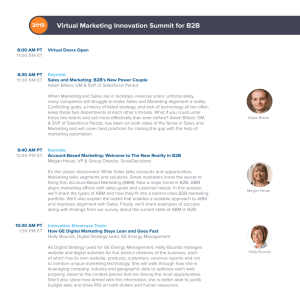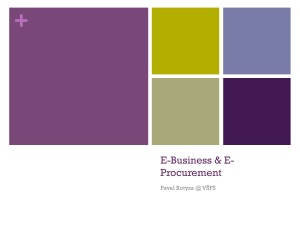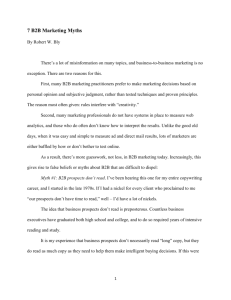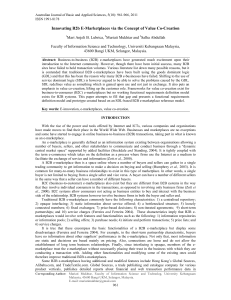B2B Marketing in Public & Private E-Markets
advertisement
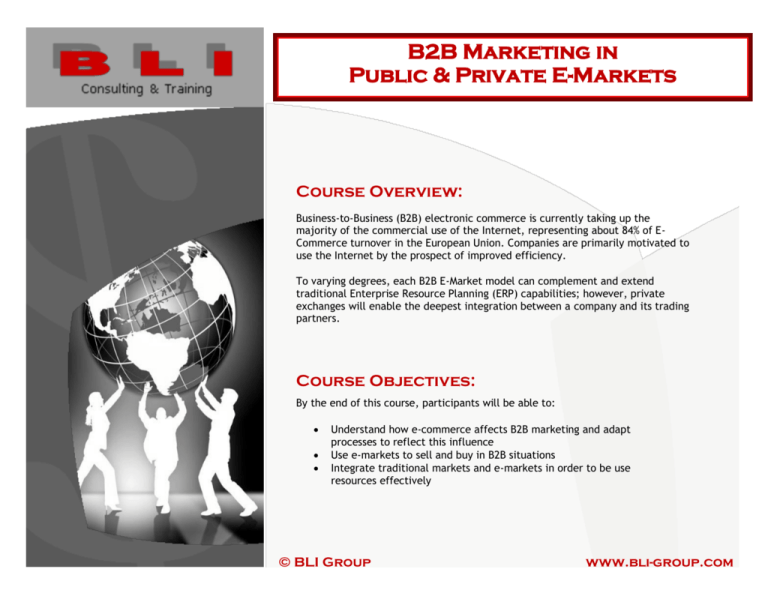
B2B Marketing in Public & Private E-Markets Course Overview: Business-to-Business (B2B) electronic commerce is currently taking up the majority of the commercial use of the Internet, representing about 84% of ECommerce turnover in the European Union. Companies are primarily motivated to use the Internet by the prospect of improved efficiency. To varying degrees, each B2B E-Market model can complement and extend traditional Enterprise Resource Planning (ERP) capabilities; however, private exchanges will enable the deepest integration between a company and its trading partners. Course Objectives: By the end of this course, participants will be able to: Understand how e-commerce affects B2B marketing and adapt processes to reflect this influence Use e-markets to sell and buy in B2B situations Integrate traditional markets and e-markets in order to be use resources effectively © BLI Group www.bli-group.com Course Outline: B2B Concepts & Related Issues With B2B o B2B E-Commerce overview o Key business drivers for B2B o Types of B2B Marketing o Basic types of B2B E-Marketplaces o Public E-Marketplace versus private E-Marketplace o Types of transactions in B2B o Supply Chain Relationships in B2B o Benefits & Limitation of B2B B2B Electronic Exchanges Sell Side Versus Buy Side (E-procurement) in B2B o One-To-Many: sell side E-Marketplaces in B2B o One-To-Many: sell side E-Marketplaces in B2B architecture o Sell side models and activities o Using intermediaries in the sell side o One-From-Many: buy side E-Marketplace in B2B (E-Procurement) o E-Procurement methods in B2B o Reverse auctions: buy side process/steps B2B Networks & Supply Chain: o Company centered (private) networks o Industry wide (vertical) networks o Trans-Industry and global networks o How several exchanges work in one supply chain © BLI Group www.bli-group.com


